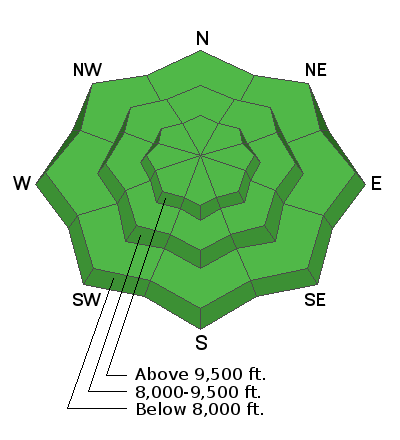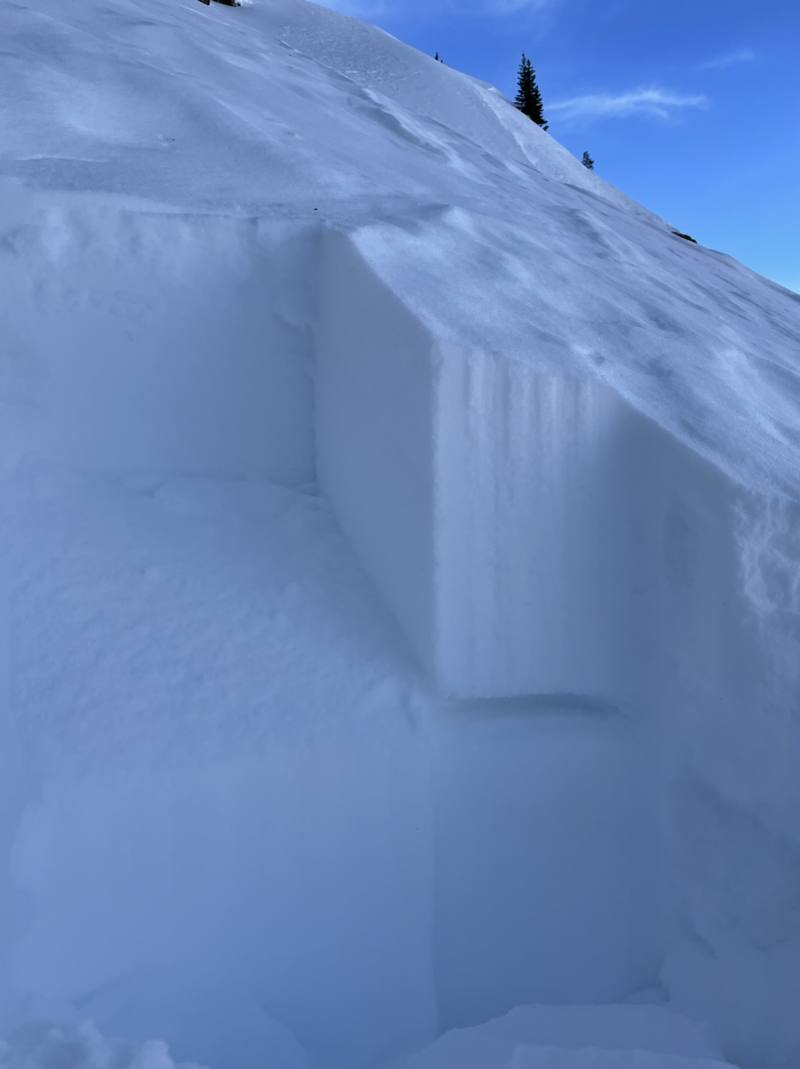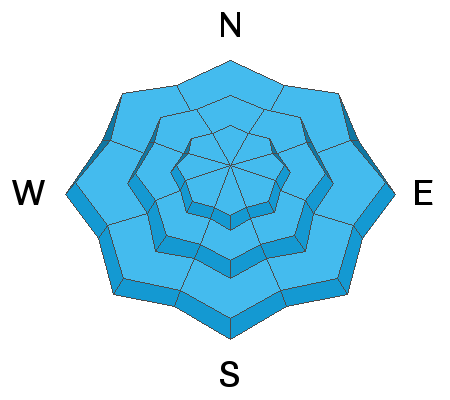This morning, there are a few clouds in the sky and temperatures are in the upper teens and low 20s F. Winds are from the west-southwest and picked up a bit - gusting in the 20s along mid-elevation ridges with gusts in the upper 30s and low 40s mph along the highest peaks.
Today will remain mostly cloudy, temperatures will rise into the upper 20s F and the west-northwesterly winds will remain moderate, gusting in the 20s at mid-elevations and low-30's mph at the highest peaks.
Soft snow and good riding can still be found on shady, wind-sheltered aspects above 8,000'. The snow surface is weakening on these slopes where it has become faceted with some
surface hoar.
The next chance for appreciable snowfall looks to come Thursday night into Friday as a system drops south through the area. Given the current trajectory only modest snowfall amounts are expected with this system, between 2-5".
No backcountry avalanches were reported yesterday.
Yesterday, within the Central Wasatch there was one observation from
Upper Mill B South, that did get propagation within their pit. It has been a few days since anyone has gotten any obvious signs of instability within a pit. While the snowpit depth was over 3 meters deep and did not propagate within the weak faceted grains at the ground, the observer got propagation within a near-surface facet layer approx 35cm down. This pit was dug on a Northeast aspect at 10,500', and had a firm, wind drifted surface. While these results seemed isolated, it is worth paying attention to the weakening snow surface and any weakening near-surface layers within the shady upper elevation aspects moving into our next precipitation event.
Layer of near surface facets that the ECT and CT failed on 35cm down on a NE Aspect at 10,500'. (Z. Little)










